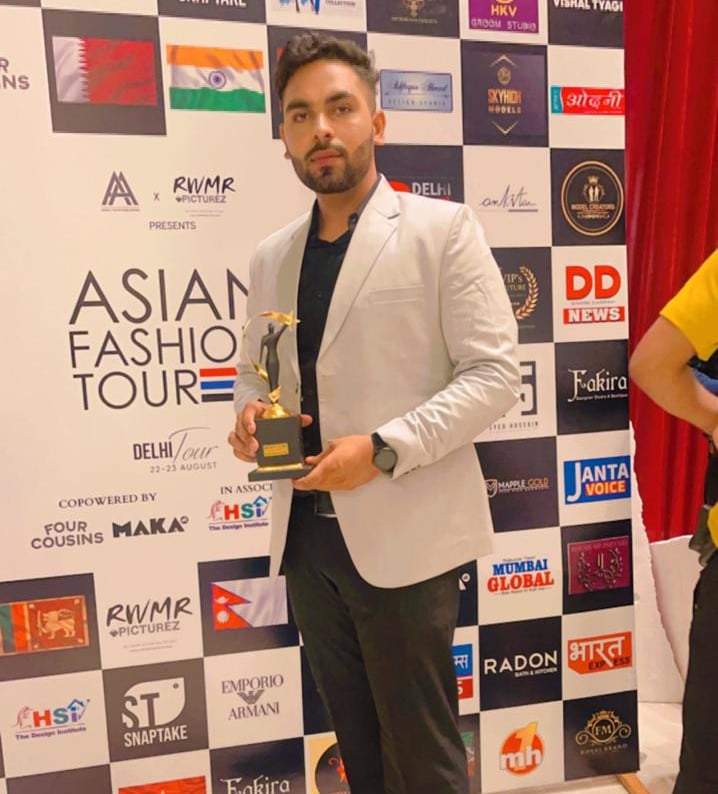Gurjot Singh Art Director
Gurjot Singh Art Director: The Emerging Creative Mind Behind India’s New-Age Film Aesthetics
By Chandigarh News Entertainment Desk
In today’s cinematic landscape, audiences expect more than just good acting or strong storytelling. They look for immersive worlds, visually striking environments, and sets that feel alive. This growing expectation has placed tremendous importance on art direction, a department that shapes the very foundation of every frame. Among the new generation of creative contributors rising in this field is Gurjot Singh Art Director, a determined and passionate Art Director trainee whose work across Punjabi, Hindi, and South Indian cinema has earned him increasing recognition.
His impressive lineup includes films like Gabru Gang (2024), Paari (2024), Rupinder Gandhi 2: The Robin Hood (2017), Ek Villain Returns (2022), Chhatriwali (2023), Jaadugar (2022), Farrey (2023), Odavum Mudiyadhu Oliyavum Mudiyadhu (2023), Irugapatru (2023), and Joshua: Imai Pol Kaka (2024). These projects reflect not only his growing expertise but also his versatility across genres, languages, and production scales.
This article takes an in-depth look at Gurjot Singh’s journey, creative contributions, skill set, working style, and the artistic promise he carries for the future of Indian cinema.
A Creative Beginning: How Gurjot Singh Found His Path in Art Direction
Every film professional has a spark that guides them to their craft, and for Gurjot Singh Art Director, that spark was visual storytelling. From a young age, he found himself drawn to the details within films—the way houses were designed, how colors were chosen, how props conveyed character emotions, and how environments shaped the mood of a scene. While many viewers noticed the actors, Gurjot was fascinated by the world built around them.
As he grew older, this fascination turned into a passion for art direction. Recognizing the importance of behind-the-scenes creative work, he dedicated himself to learning set design, prop management, color coordination, and the entire workflow involved in the art department. He stepped into the film industry as an Art Director trainee, working under experienced seniors, absorbing technical knowledge, and understanding the practical challenges of filmmaking.
This early phase marked the beginning of a career built on discipline, curiosity, and creative commitment.
Stepping Into Cinema: Early Work and Foundation in Punjabi Films
Punjabi cinema has always been known for its rich cultural visuals, traditional landscapes, and emotional storytelling. It was within this environment that Gurjot Singh Art Director began acquiring hands-on experience. His work in Rupinder Gandhi 2: The Robin Hood (2017) gave him a strong foundation, allowing him to observe real-time set construction, location styling, and prop coordination.
This film required authentic village and semi-urban settings, and Gurjot played a key role in maintaining realism in the visual elements. From rural household props to street setups and action-scene arrangements, he contributed to building frames that resonated with Punjabi culture. Working on this film also taught him the importance of teamwork, adaptability, and visual consistency—skills that later helped him succeed in bigger productions.
Expanding Horizons: Entering Bollywood with Distinctive Projects
With a strong base, Gurjot soon expanded into the Hindi film industry. Bollywood projects exposed him to diverse creative demands, larger teams, and more complex set designs. Each film provided him with new learning experiences and opportunities to showcase his growing talent.
Ek Villain Returns (2022)
This high-energy thriller required dark, stylish, and emotionally intense visual environments. Gurjot supported the art direction team in setting up dramatic spaces, coordinating intricate props, and ensuring the film’s urban tone matched the story’s suspenseful nature.
Jaadugar (2022)
A vibrant and lighthearted film, Jaadugar offered contrasting creative demands. Instead of dark cityscapes, the project required bright, cheerful, and audience-friendly visuals. Gurjot helped craft playful environments, sports setups, and character-driven spaces that added charm to the film.
Chhatriwali (2023)
This social drama needed realistic middle-class settings that felt relatable to viewers. Gurjot contributed to building practical environments such as homes, schools, offices, and community spaces, enhancing the film’s message through subtle but effective visual cues.
Farrey (2023)
Youth-oriented and stylish, Farrey demanded sleek, academic, and high-pressure environments. Gurjot’s work helped bring authenticity to school settings, exam halls, and competitive spaces central to the story.
Through these Bollywood films, Gurjot strengthened his command over varied aesthetics, demonstrating his ability to shift between genres effortlessly.
Crossing into South Indian Cinema: Growth Through New Challenges
South Indian cinema, especially Tamil film production, is known for its professionalism, technical precision, and visually rich storytelling. Working in this space offered Gurjot Singh Art Director a new level of challenge and creative expansion.
Odavum Mudiyadhu Oliyavum Mudiyadhu (2023)
This film’s quirky narrative required unique visual elements and bold set ideas. Gurjot assisted in designing creative layouts and stylized spaces that matched the film’s distinctive tone.
Irugapatru (2023)
A heartfelt emotional drama, Irugapatru demanded warm, intimate setups such as realistic homes, relationship-centered spaces, and emotionally expressive interiors. Gurjot played an essential part in maintaining visual harmony throughout the film.
Joshua: Imai Pol Kaka (2024)
This action thriller marked a major shift toward fast-paced, modern, and high-energy visual environments. Sleek interiors, action-oriented sets, and urban designs were part of the film’s style, and Gurjot contributed extensively to creating these visually impactful moments.
Working across South Indian productions strengthened Gurjot’s technical knowledge, broadened his creative exposure, and improved his understanding of high-level set coordination.
Return to Punjabi Cinema with a Refined Artistic Approach
With multi-industry experience at his back, Gurjot Singh Art Director returned to Punjabi cinema with enhanced skills and a deeper creative perspective.
Gabru Gang (2024)
A youth-centric film filled with music and energy, Gabru Gang required modern Punjabi aesthetics, upbeat visual styles, and dynamic spaces. Gurjot worked on designing vibrant setups that aligned with the film’s fast-paced narrative.
Paari (2024)
This emotional drama called for authenticity and cultural sensitivity in visual representation. Gurjot contributed to building heartfelt environments inspired by Punjabi traditions, daily life, and regional beauty.
Through these projects, he reaffirmed his connection with Punjabi cinema while bringing new-age design influences to regional storytelling.
An Insight into His Creative Mindset and Working Style
What sets Gurjot Singh Art Director apart is his dedication to creating meaning through visual detail. Colleagues often describe him as a professional who blends creativity with discipline, ensuring that sets are not only aesthetically pleasing but also functional for shooting schedules.
His working style is defined by clarity, patience, and strong problem-solving abilities. On set, he is known for his ability to adapt quickly, handle last-minute changes, and ensure visual continuity across scenes. He also maintains excellent communication with directors, cinematographers, production designers, and costume teams, making him an important collaborative force.
Technical Skills Shaping His Art Direction Career
Over the years, Gurjot has developed several essential skills that strengthen his contributions:
He has learned to work with multiple materials, textures, and fabrication methods, enabling him to help build durable and camera-friendly structures.
He understands color psychology and its effect on a viewer’s emotional response, allowing him to create appropriate color palettes for different genres.
He actively participates in ensuring continuity, maintaining accurate set layouts, and tracking props across shooting schedules.
His coordination with cinematographers ensures harmony between lighting design and constructed environments.
He also showcases a deep awareness of resource management and budget usage, optimizing available materials without compromising visual quality.
These strengths make him a reliable and creative asset in the art department.
A Future Filled with Creative Possibilities
With films across three major industries under his belt, Gurjot Singh Art Director is positioned for a bright future. His passion, discipline, and growing experience make him a strong candidate for upcoming web series, high-budget films, and OTT productions. His cross-industry exposure helps him understand diverse visual demands, while his commitment to learning ensures continuous growth.
As cinema continues to evolve into richer and more immersive visual formats, emerging talents like Gurjot will play a crucial role in shaping its future. His ability to adapt, innovate, and support complex creative visions makes him one of the promising names to watch in Indian film art direction.
Conclusion
The journey of Gurjot Singh Art Director reflects passion, perseverance, and a strong desire to learn. From regional Punjabi films to Bollywood dramas and Tamil action thrillers, his contributions as an Art Director trainee highlight his growing artistic maturity. Each project in his filmography stands as a testament to his adaptability and commitment to visual storytelling.
With expanding opportunities and strong industry relevance, Gurjot is on a path toward becoming one of the next significant creative contributors in Indian cinema. His story is not just about film sets and props; it is about an artist shaping impactful worlds—one frame at a time.



